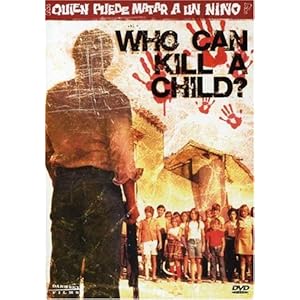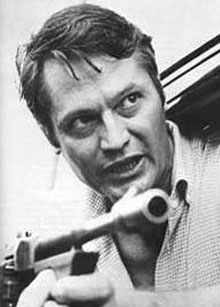
That's the first scene of 1960s The Hypnotic Eye - and brother, if that doesn't grab you by the boo-boo, I don't know what will. Written by William Read Woodfield, a professional Hollywood photographer and part-time magician/entertainer, and his wife Gitta, The Hypnotic Eye is the story of super square Detective Sergeant Steve Kennedy (Joe Partridge), his cute-as-a-button girlfriend Marcia (Marcia Henderson) and French hypnotist "The Great Desmond" (Jacques Bergerac). Kennedy's investigating a recent rash of self-mutilations performed by good-looking young women, the latest victim being Marcia's friend Dodie (Merry Andrews). In what should be glaringly obvious to our hero, the heavily-accented hypnotist and his assistant/lover Justine (Allison Hayes of Attack of the 50ft. Woman fame) are behind these terrible crimes.
In addition to being a fun horror/mystery movie, The Hypnotic Eye is also a prime example of gimmick horror. Taking a page (or stealing a page) out of the great William Castle's book, the Woodfields and director George Blair concocted "HypnoMagic" a state-of-the-art film making process in which the viewing audience would be hypnotized during the middle of the movie. During that sequence of the movie, the only thing the audience will be compelled to do is giggle. But The Hypnotic Eye is not an Ed Wood movie. In fact, with some casting changes, a script polish and little more money, this movie probably could have been a classic contender. Blair's direction is competent, the cast is game, the story is good and the effects work is downright scary and gory. Add in lots of cigarette smoking, poorly performed jazz, a doctor who sounds like he should be pitching pennies in an alley, a criminal psychologist who likes to walk around in his robe showing off his man boobs, "The King of the Beatniks" performing his howlingly awful poem "Confessions of a B-Movie Addict" and, of course, one hypnotic eye, and you've got the ingredients for the perfect midnight movie.
If you miss the days of Saturday afternoon UHF monster movie shows or were too young to experience them, pick up a copy of The Hypnotic Eye, available for the first time ever on DVD from the Warner Archives Collection.









